Volume 34, Issue 4
Special Issue on Visual Computing
Displaying 1-16 of 16 articles from this issue
- |<
- <
- 1
- >
- >|
Papers
-
2005Volume 34Issue 4 Pages 302-310
Published: 2005
Released on J-STAGE: June 24, 2011
Download PDF (1698K) -
2005Volume 34Issue 4 Pages 311-318
Published: 2005
Released on J-STAGE: June 24, 2011
Download PDF (1351K) -
2005Volume 34Issue 4 Pages 319-326
Published: 2005
Released on J-STAGE: June 24, 2011
Download PDF (664K) -
2005Volume 34Issue 4 Pages 327-335
Published: 2005
Released on J-STAGE: June 24, 2011
Download PDF (743K) -
2005Volume 34Issue 4 Pages 336-343
Published: 2005
Released on J-STAGE: June 24, 2011
Download PDF (950K) -
2005Volume 34Issue 4 Pages 344-355
Published: 2005
Released on J-STAGE: June 24, 2011
Download PDF (3179K) -
2005Volume 34Issue 4 Pages 356-369
Published: 2005
Released on J-STAGE: June 24, 2011
Download PDF (1920K) -
2005Volume 34Issue 4 Pages 370-378
Published: 2005
Released on J-STAGE: June 24, 2011
Download PDF (570K) -
2005Volume 34Issue 4 Pages 379-386
Published: 2005
Released on J-STAGE: June 24, 2011
Download PDF (373K)
Contributed Papers
-
2005Volume 34Issue 4 Pages 390-397
Published: 2005
Released on J-STAGE: June 24, 2011
Download PDF (975K) -
2005Volume 34Issue 4 Pages 398-404
Published: 2005
Released on J-STAGE: June 24, 2011
Download PDF (223K) -
2005Volume 34Issue 4 Pages 405-411
Published: 2005
Released on J-STAGE: June 24, 2011
Download PDF (340K) -
2005Volume 34Issue 4 Pages 412-419
Published: 2005
Released on J-STAGE: June 24, 2011
Download PDF (684K)
Short Papers
-
2005Volume 34Issue 4 Pages 420-424
Published: 2005
Released on J-STAGE: June 24, 2011
Download PDF (747K)
Tutorial
-
2005Volume 34Issue 4 Pages 425-432
Published: 2005
Released on J-STAGE: June 24, 2011
Download PDF (307K)
Technical Survey
-
2005Volume 34Issue 4 Pages 433-440
Published: 2005
Released on J-STAGE: June 24, 2011
Download PDF (813K)
- |<
- <
- 1
- >
- >|
